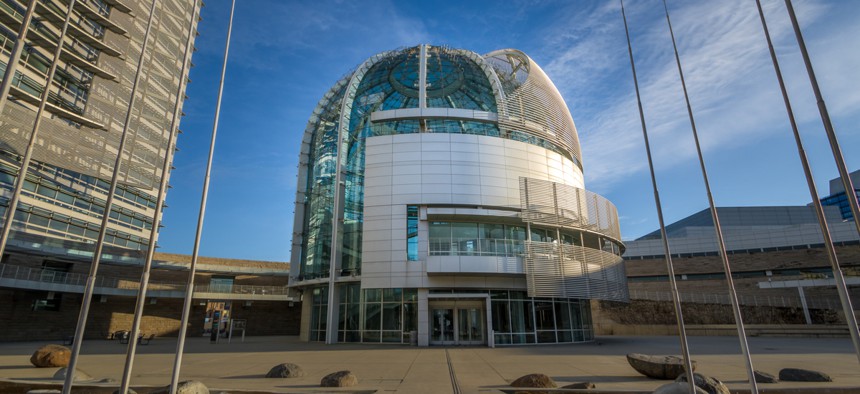Route Fifty’s 2018 Management Survey Shows Different Attitudes on Budgeting Practices

City Hall in San José, which uses priorities-based budgeting. Shutterstock
Three-quarters of local government respondents said their organization would benefit from priorities-based budgeting.
Digging around the results of Route Fifty’s 2018 Management Survey, one of the interesting items that stood out were the attitudes toward two budget practice approaches that are being used by some state and local jurisdictions.
Our newly released survey asked about both participatory budgeting (where citizens provide input into the most important funding priorities) and priorities-based budgeting (which uses a more results-driven funding approach).
Among local government respondents, 75 percent said that their organization would benefit from priorities-based budgeting; only 38 percent, however, said they thought their organization would benefit from a participatory-based approach.
Sixth-five percent of state government respondents said their organization would benefit from a priorities-based approach.
Route Fifty has previously featured stories about both budgeting practices.
“The ideas make so much sense. Everyone understands that priority-based budgeting is a good thing. But it’s not easy to implement,” Chris Fabian, co-founder of ResourceX and the Center for Priority-Based Budgeting, told a gathering of local government professionals last winter in Washington state, as Route Fifty reported at the time. “It’s tough.”
While priorities-based budgeting can look across the entirety of an agency or a local government, participatory budgeting is usually a more targeted exercise where the public is involved in the process in allocating a limited pool of funding toward community projects.
In 2015, the use of participatory budgeting by the New York City Council, was recognized by the Ash Center for Democratic Governance and Innovation at Harvard University’s John F. Kennedy School of Government with a Roy and Lila Ash Innovation Award for Public Engagement in Government. In one participatory budgeting cycle, where $32 million was available for community improvements, 51,000 people voted on projects they wanted to see happen.
Through Feb. 2, the Seattle Department of Neighborhoods is accepting proposals for community projects that may be included in another iteration of Your Voice, Your Choice, a program built around citizens deciding how $3 million in small-scale street and parks improvements are made.
Why the lack of enthusiasm for participatory budgeting compared to priorities-based budget? While state and local budgeting is something that usually involves a wide variety of stakeholders, to government officials and professionals—who are sometimes at arms length from community members—the prospect of getting the public more involved in the process might sound like a daunting task compared to what they’re used to.
Michael Grass is Executive Editor of Government Executive’s Route Fifty and is based in Seattle.
NEXT STORY: Craft Beer Is the Strangest, Happiest Economic Story in America






